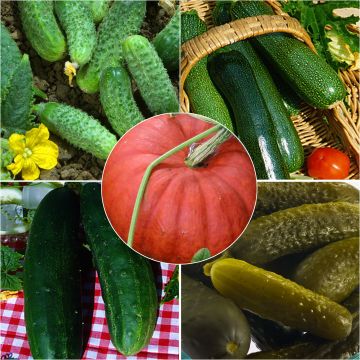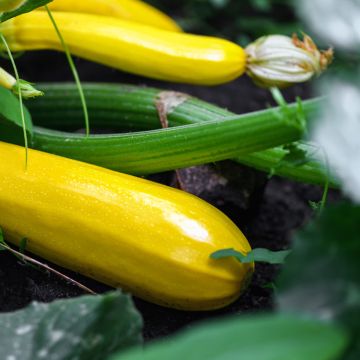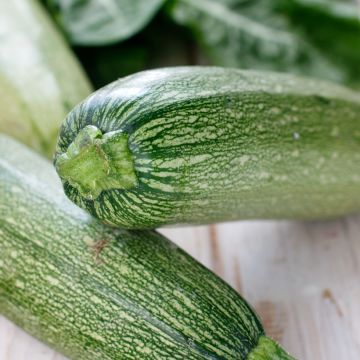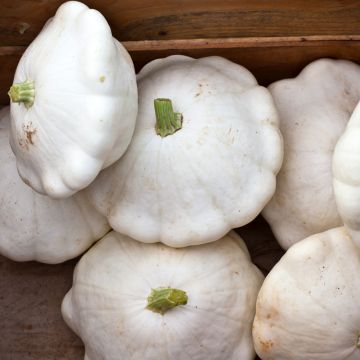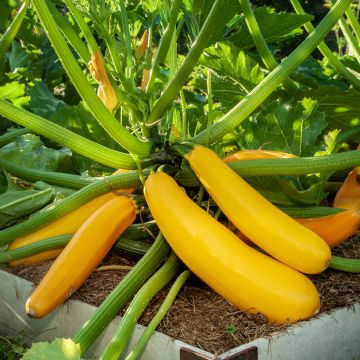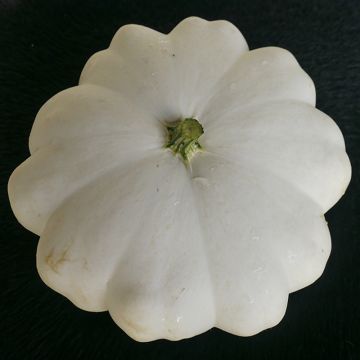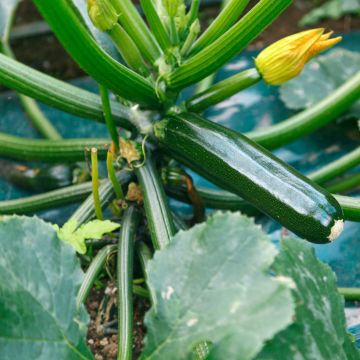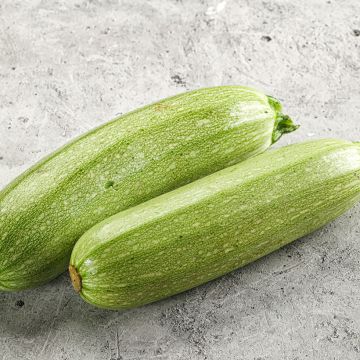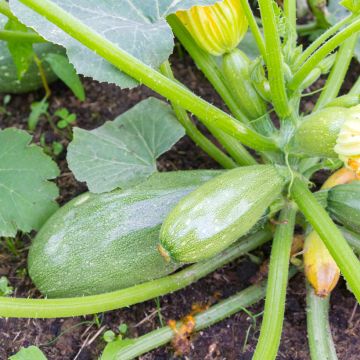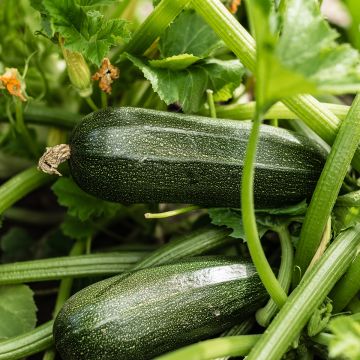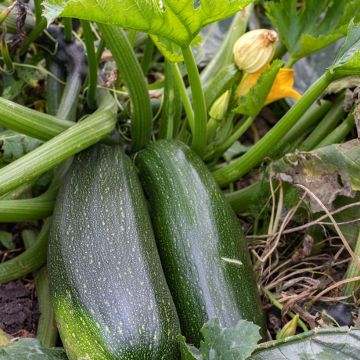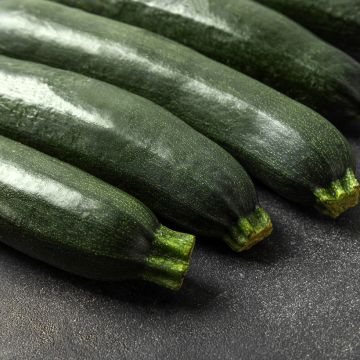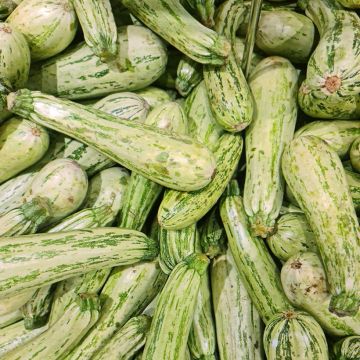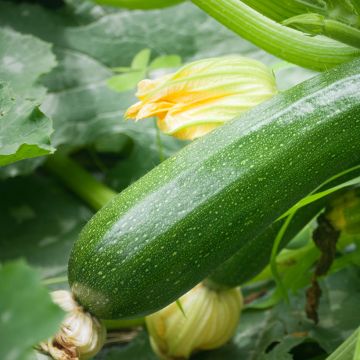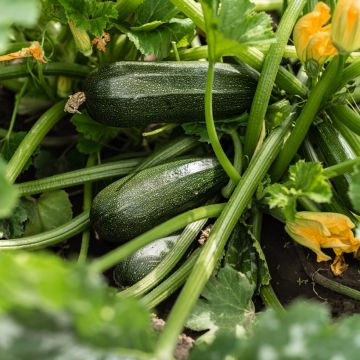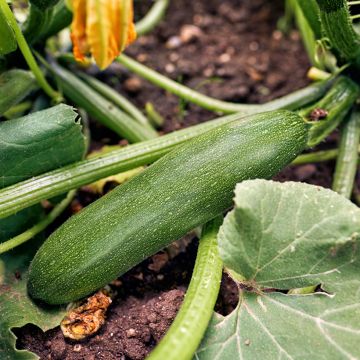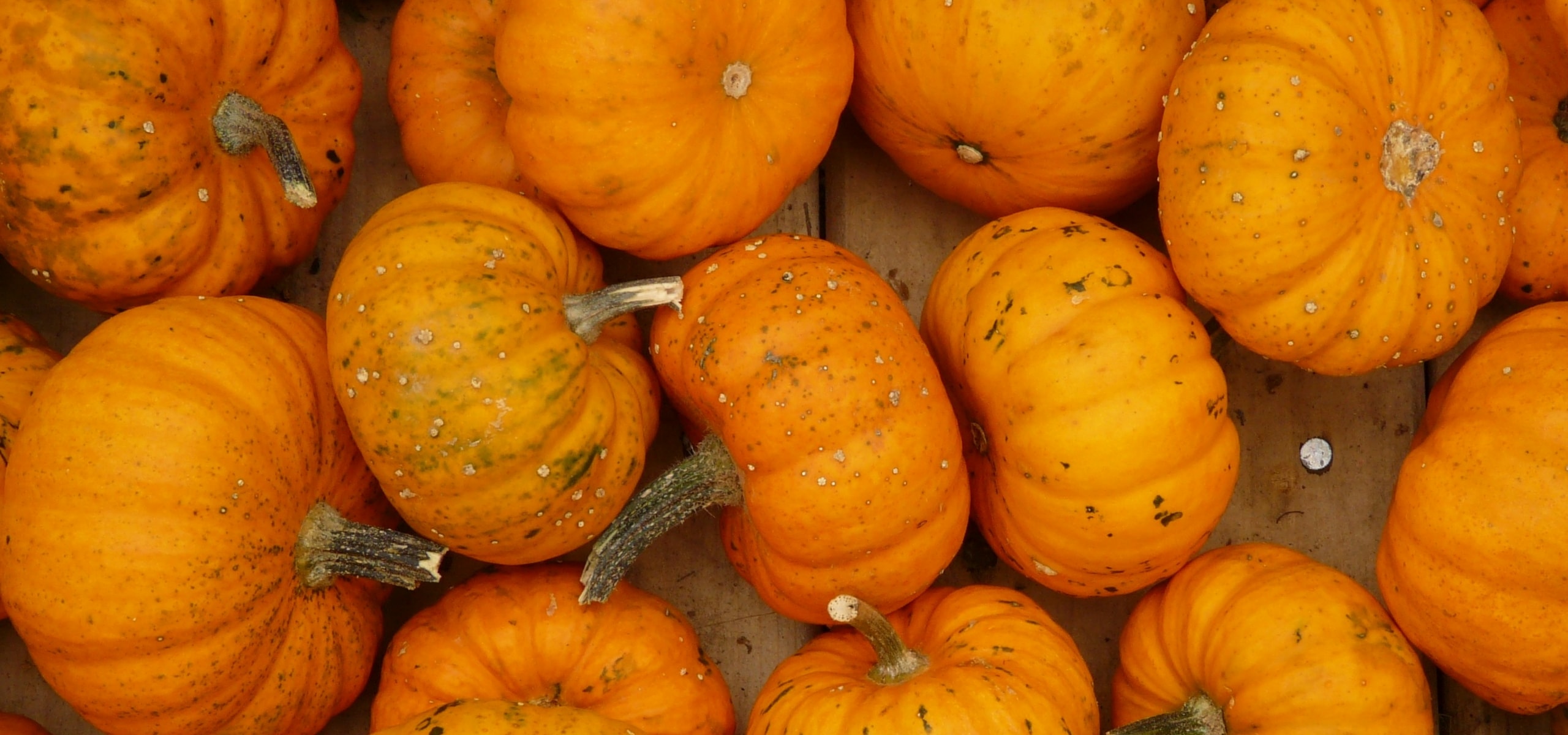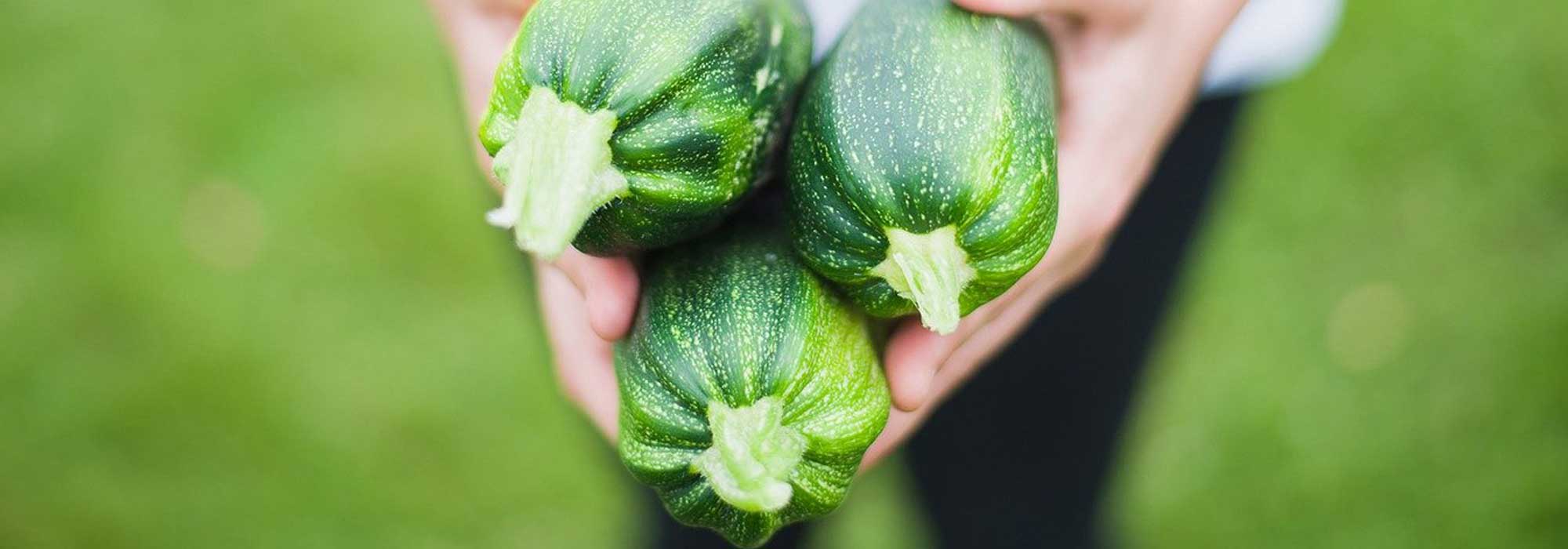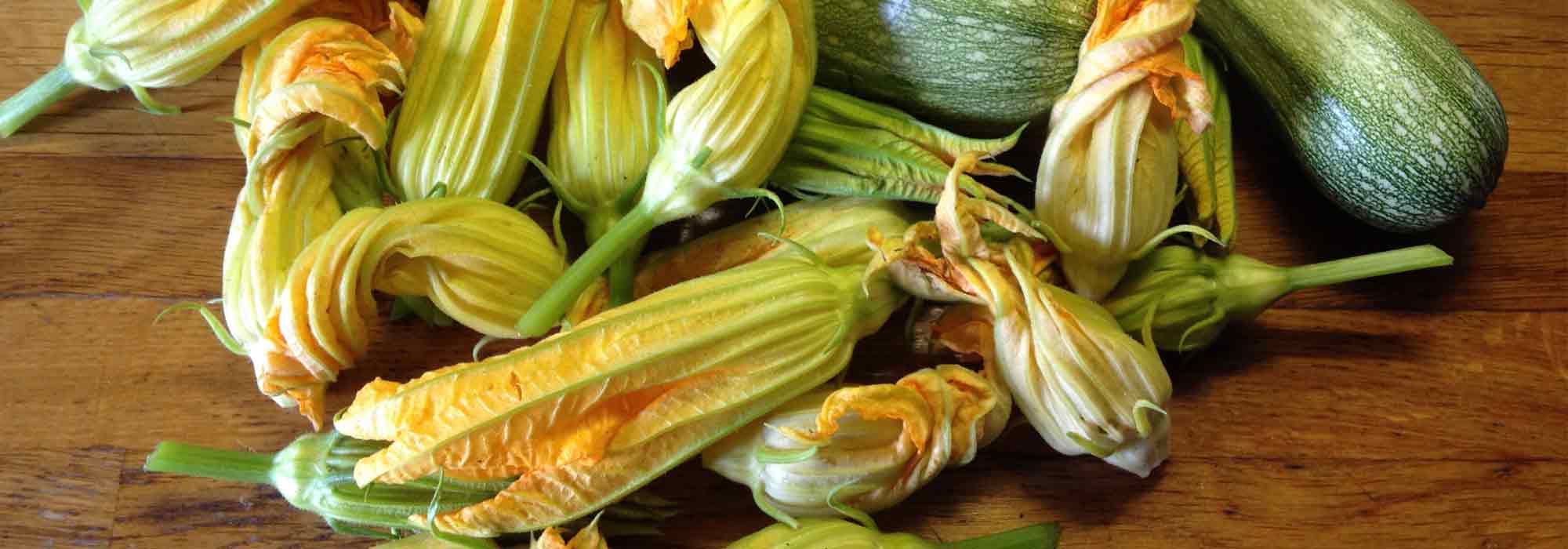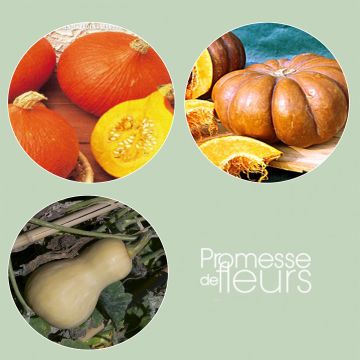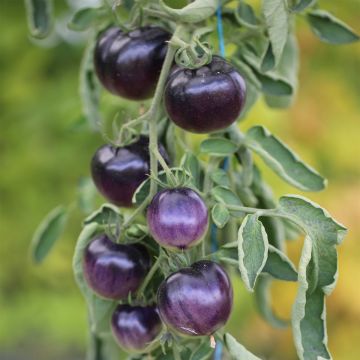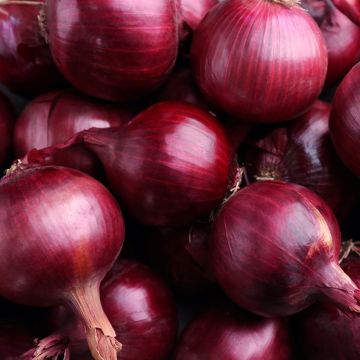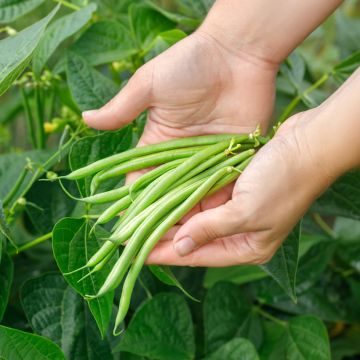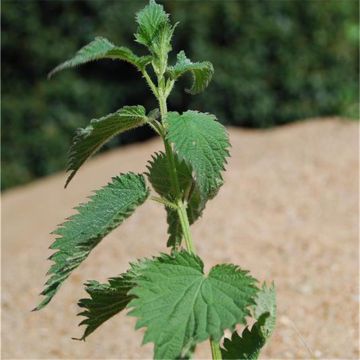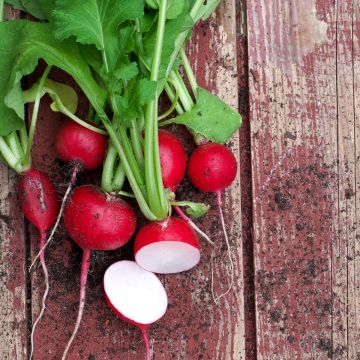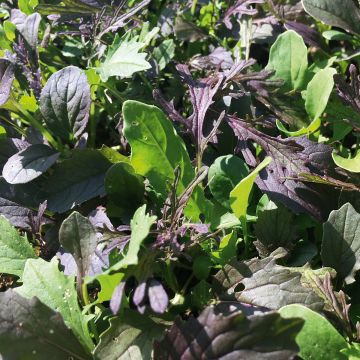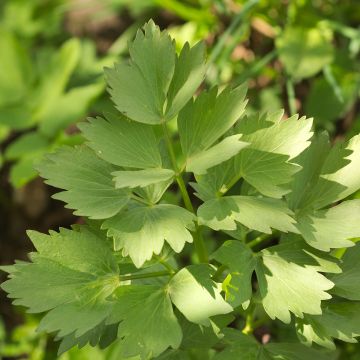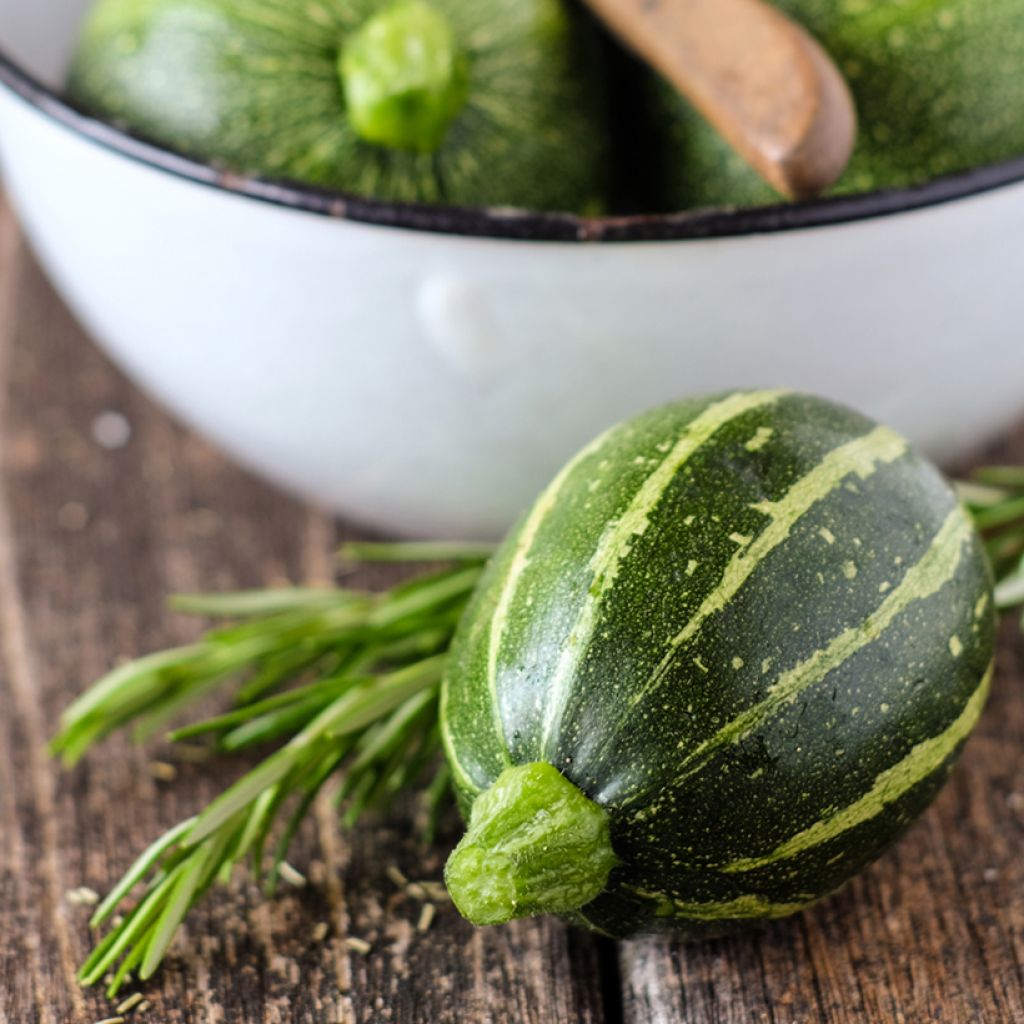

Zucchini Eclipse F1 - Cucurbita pepo
Zucchini Eclipse F1 - Cucurbita pepo
Cucurbita pepo Eclipse F1
Zucchini, Summer Squash
Productive plants (perhaps too much), the fruits are perfectly formed, and they are ideal for making stuffed vegetables. A little advice: pick them when they are the size of an orange, remove the male flowers to make fritters and to not exhaust the plant.
guy D., 06/11/2017
Special offer!
Receive a €20 voucher for any order over €90 (excluding delivery costs, credit notes, and plastic-free options)!
1- Add your favorite plants to your cart.
2- Once you have reached €90, confirm your order (you can even choose the delivery date!).
3- As soon as your order is shipped, you will receive an email containing your voucher code, valid for 3 months (90 days).
Your voucher is unique and can only be used once, for any order with a minimum value of €20, excluding delivery costs.
Can be combined with other current offers, non-divisible and non-refundable.
Why not try an alternative variety in stock?
View all →This plant carries a 6 months recovery warranty
More information
We guarantee the quality of our plants for a full growing cycle, and will replace at our expense any plant that fails to recover under normal climatic and planting conditions.
Description
The Eclipse F1 Courgette is a variety that produces numerous round, dark green fruits with lighter stripes throughout the summer. It has a vigorous bushy habit. This courgette is similar to the Ronde de Nice variety and is very easy to stuff. It can be sown under cover from April to May or directly in the ground from late May to late June for a harvest from July to October.
Orange, green, red, yellow, black, or even blue, smooth, ribbed, warty, with tender skin... Squashes and courgettes offer a surprising variety of shapes, colors, and sizes because they hybridize easily. That's why there are so many different varieties.
In common language, winter squashes refer to all types of pumpkins, potimarrons, and butternuts with tough skin and delicately sweet flesh. Summer squashes or courgettes (in Latin, Cucurbita pepo) refer to the different varieties that are harvested when the skin is still tender. The latter are consumed with the seeds when they are still tender.
All squashes are native to America and belong to the large family of cucurbits. They were introduced to Europe in the 16th century. Generally, they are trailing plants that cling to any support with the help of their tendrils. Female flowers can be distinguished from male flowers by their inferior ovary (below the flower), which resembles an embryo of a fruit. In many regions, male flowers are harvested just after pollination to be consumed stuffed or in fritters.
In cooking, courgettes can be prepared in multiple ways: sautéed, fried, gratin, soups, or stuffed. They are essential ingredients in Provençal ratatouille, Maghrebi couscous, and many emblematic Mediterranean dishes. They are low in calories but rich in vitamins, especially provitamin A, vitamin B, and minerals.
Courgettes are fruit vegetables that require regular watering to give their best. They love heat and sun and should not be planted in the garden before early June.
Note: This variety is labeled F1 for "F1 hybrid" because it is a variety resulting from the cross-breeding of carefully selected parents to combine their qualities. This results in a variety that can be particularly tasty and/or early while also being resistant to certain diseases. Sometimes criticized or wrongly associated with GMOs, F1 hybrid seeds are interesting both for their uniformity and their resistance, but unfortunately, their qualities do not pass on to subsequent generations: it will therefore not be possible to save the seeds for future sowing.
Harvest: Courgettes are harvested young and fresh.
Storage: They can be stored for a few days at room temperature or in the bottom of the refrigerator, and cut into pieces and frozen for several months.
The gardener's tip: Don't forget the flowers! Even though the vegetable garden is primarily a garden for producing quality vegetables, it is always interesting to plant flowers. Firstly, for the aesthetic pleasure they provide, but also to repel pests and attract valuable pollinators. So, don't hesitate to plant, in the middle of the rows or at the edge of the bed, Gaillardias, Marigolds, Zinnias, Cosmos, Nasturtiums, or even beautiful herbs like Dill. However, be cautious of some plants, like Borage, which tends to self-seed abundantly in dedicated growing spaces.
Harvest
Plant habit
Foliage
Botanical data
Cucurbita
pepo
Eclipse F1
Cucurbitaceae
Zucchini, Summer Squash
Mediterranean
Annual
Other Courgette seeds
View all →Planting and care
Sowing:
The germination temperature for zucchini ranges from 21 to 35°C (69.8 to 95°F) and usually takes between 6 and 10 days, depending on the temperature.
Sowing period: under cover from April to May or directly in the ground from late May to late June
Harvest period: from July to October
You can either sow the seeds directly in place or prepare seedlings that will later be planted in their final position in the garden.
Preparing seedlings: In a more or less heated shelter (depending on the sowing date and the outside temperature), in a seed tray or directly in a bucket, sow the seeds at a depth of 2 cm (1in) in a good seed compost. Cover the seeds with compost and remember to keep the substrate moist but not waterlogged.
When the young plants appear strong enough to be handled, transplant them into buckets if necessary before planting them in the garden, when there is no longer any risk of frost. When planting, leave a spacing of one meter in all directions.
Direct sowing: In well-amended and loosened soil, sow the seeds in holes, three seeds per hole, each hole being three centimeters deep and with a spacing of one meter in all directions. When the seedlings are well developed, thin them out, keeping only the most vigorous plant.
Cultivation:
Zucchini is grown in the sun. It is a fairly demanding vegetable that requires well-fertilized soil. It is advisable to make a good supply of mature compost (about 3/4 kg per m2) a few months before planting, by digging it in to a depth of 5 cm (2in), after having loosened the soil, as is the case for all vegetable crops.
Like all cucurbits, zucchini can be susceptible to powdery mildew: a white coating appears on the foliage. It is necessary to remove heavily affected leaves and spray with wettable sulfur every 2 weeks. In case of a minor attack, you can also treat the plants with diluted skimmed milk (10 to 20%) in rainwater. As a preventive measure, avoid watering the foliage. A decoction of horsetail can also be sprayed to strengthen the foliage's resistance.
Seedlings
Care
Intended location
Planting & care advice
-
, onOrder confirmed
Reply from on Promesse de fleurs
Similar products
Haven't found what you were looking for?
Hardiness is the lowest winter temperature a plant can endure without suffering serious damage or even dying. However, hardiness is affected by location (a sheltered area, such as a patio), protection (winter cover) and soil type (hardiness is improved by well-drained soil).

Photo Sharing Terms & Conditions
In order to encourage gardeners to interact and share their experiences, Promesse de fleurs offers various media enabling content to be uploaded onto its Site - in particular via the ‘Photo sharing’ module.
The User agrees to refrain from:
- Posting any content that is illegal, prejudicial, insulting, racist, inciteful to hatred, revisionist, contrary to public decency, that infringes on privacy or on the privacy rights of third parties, in particular the publicity rights of persons and goods, intellectual property rights, or the right to privacy.
- Submitting content on behalf of a third party;
- Impersonate the identity of a third party and/or publish any personal information about a third party;
In general, the User undertakes to refrain from any unethical behaviour.
All Content (in particular text, comments, files, images, photos, videos, creative works, etc.), which may be subject to property or intellectual property rights, image or other private rights, shall remain the property of the User, subject to the limited rights granted by the terms of the licence granted by Promesse de fleurs as stated below. Users are at liberty to publish or not to publish such Content on the Site, notably via the ‘Photo Sharing’ facility, and accept that this Content shall be made public and freely accessible, notably on the Internet.
Users further acknowledge, undertake to have ,and guarantee that they hold all necessary rights and permissions to publish such material on the Site, in particular with regard to the legislation in force pertaining to any privacy, property, intellectual property, image, or contractual rights, or rights of any other nature. By publishing such Content on the Site, Users acknowledge accepting full liability as publishers of the Content within the meaning of the law, and grant Promesse de fleurs, free of charge, an inclusive, worldwide licence for the said Content for the entire duration of its publication, including all reproduction, representation, up/downloading, displaying, performing, transmission, and storage rights.
Users also grant permission for their name to be linked to the Content and accept that this link may not always be made available.
By engaging in posting material, Users consent to their Content becoming automatically accessible on the Internet, in particular on other sites and/or blogs and/or web pages of the Promesse de fleurs site, including in particular social pages and the Promesse de fleurs catalogue.
Users may secure the removal of entrusted content free of charge by issuing a simple request via our contact form.
The flowering period indicated on our website applies to countries and regions located in USDA zone 8 (France, the United Kingdom, Ireland, the Netherlands, etc.)
It will vary according to where you live:
- In zones 9 to 10 (Italy, Spain, Greece, etc.), flowering will occur about 2 to 4 weeks earlier.
- In zones 6 to 7 (Germany, Poland, Slovenia, and lower mountainous regions), flowering will be delayed by 2 to 3 weeks.
- In zone 5 (Central Europe, Scandinavia), blooming will be delayed by 3 to 5 weeks.
In temperate climates, pruning of spring-flowering shrubs (forsythia, spireas, etc.) should be done just after flowering.
Pruning of summer-flowering shrubs (Indian Lilac, Perovskia, etc.) can be done in winter or spring.
In cold regions as well as with frost-sensitive plants, avoid pruning too early when severe frosts may still occur.
The planting period indicated on our website applies to countries and regions located in USDA zone 8 (France, United Kingdom, Ireland, Netherlands).
It will vary according to where you live:
- In Mediterranean zones (Marseille, Madrid, Milan, etc.), autumn and winter are the best planting periods.
- In continental zones (Strasbourg, Munich, Vienna, etc.), delay planting by 2 to 3 weeks in spring and bring it forward by 2 to 4 weeks in autumn.
- In mountainous regions (the Alps, Pyrenees, Carpathians, etc.), it is best to plant in late spring (May-June) or late summer (August-September).
The harvesting period indicated on our website applies to countries and regions in USDA zone 8 (France, England, Ireland, the Netherlands).
In colder areas (Scandinavia, Poland, Austria...) fruit and vegetable harvests are likely to be delayed by 3-4 weeks.
In warmer areas (Italy, Spain, Greece, etc.), harvesting will probably take place earlier, depending on weather conditions.
The sowing periods indicated on our website apply to countries and regions within USDA Zone 8 (France, UK, Ireland, Netherlands).
In colder areas (Scandinavia, Poland, Austria...), delay any outdoor sowing by 3-4 weeks, or sow under glass.
In warmer climes (Italy, Spain, Greece, etc.), bring outdoor sowing forward by a few weeks.






























